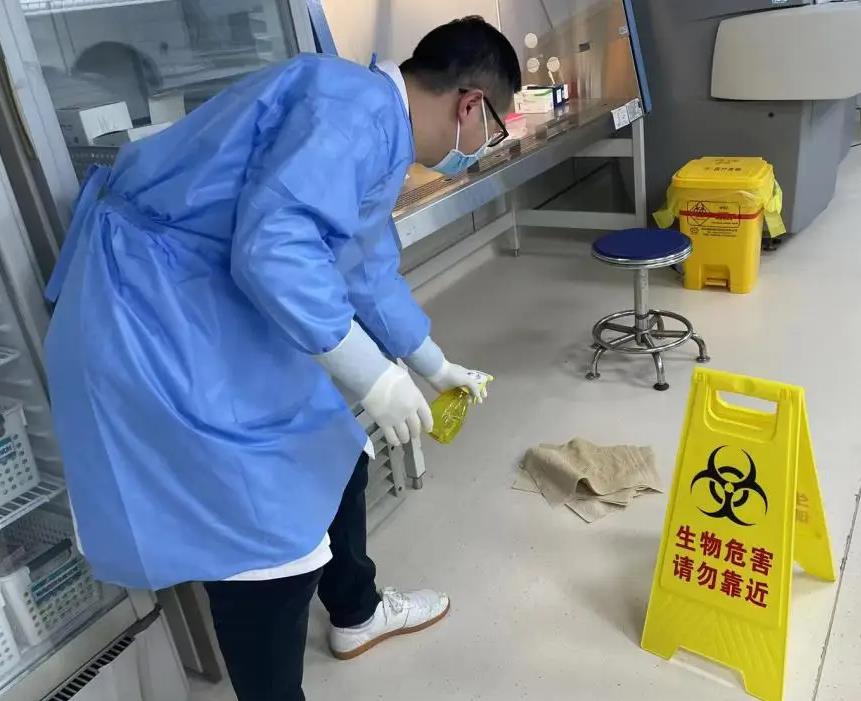Table of Contents
Hey there, lab warriors! As a seasoned biosafety consultant with over a decade of experience in some of America’s top research facilities, I’m here to break down the complex world of biological hazards and biosafety levels. In 2024, with emerging pathogens and cutting-edge research pushing boundaries, understanding these concepts isn’t just crucial—it’s a game-changer for your lab’s safety and success. Let’s dive in!
The Biological Hazard Landscape: More Than Just Germs
First things first—biological hazards aren’t just about nasty bacteria or viruses. They’re a whole ecosystem of potential risks:
- Microorganisms: Bacteria, viruses, fungi, prions
- Biotoxins: Poison produced by living organisms
- Allergens: Substances causing allergic reactions
- Cell cultures: Including potentially infected human or animal cells
- Genetically modified organisms (GMOs): The wild cards of the bio world
Pro Tip: Always assume any human or animal sample is infectious. Better safe than sorry, folks!
Biosafety Levels: The Four Horsemen of Lab Safety
Now, let’s talk about Biosafety Levels (BSL). Think of them as the difficulty settings in a video game, but for lab safety:
BSL-1: The Rookie Level
- Suitable for work with well-characterized agents not known to cause disease in healthy adults
- Think: High school biology lab
Key Features:
– Standard microbiological practices
– No special containment equipment needed
– Open bench work allowed
BSL-2: Leveling Up
- For agents associated with human disease, but with moderate risk
- Examples: Hepatitis B, HIV, Salmonella
Key Features:
– Limited lab access
– Biohazard warning signs
– Use of biological safety cabinets for procedures creating infectious aerosols
BSL-3: Now We’re Talking Serious Business
- For indigenous or exotic agents with potential for aerosol transmission and severe or lethal disease
- Examples: Tuberculosis, West Nile virus
Key Features:
– Controlled access with double-door entry
– Decontamination of all waste
– Negative airflow into the laboratory
BSL-4: The Final Boss
- For dangerous and exotic agents posing high risk of life-threatening disease
- Examples: Ebola, Marburg virus
Key Features:
– Complete outfit change before entry
– Decontamination shower on exit
– All material decontaminated on exit from lab
2024 Spotlight: Emerging Challenges
- Synthetic Biology: As we push the boundaries of genetic engineering, new biosafety protocols are emerging. Stay tuned for updated guidelines!
- AI in Biosafety: Artificial Intelligence is revolutionizing risk assessment. Some labs are using AI to predict potential hazards before they occur.
- Remote Biosafety Monitoring: With the rise of smart lab equipment, real-time biosafety monitoring from anywhere is becoming a reality.
- Eco-Friendly Decontamination: New, environmentally friendly decontamination methods are gaining traction. Green is the new safe!
Practical Tips for Upping Your Biosafety Game
- Know Your Enemy: Regularly update your knowledge on the specific hazards in your lab.
- PPE Is Your BFF: Personal Protective Equipment isn’t a suggestion—it’s your armor.
- Train, Train, Train: Regular biosafety training isn’t just good practice—it’s a lifesaver.
- Embrace Technology: Use digital tools for risk assessment and safety protocol management.
- Culture of Safety: Foster an environment where everyone feels responsible for maintaining biosafety.
- Plan for the Worst: Have clear emergency procedures and practice them regularly.
- Stay Updated: Biosafety guidelines evolve. Make sure you’re always working with the latest info.
Conclusion: Safety First, Discovery Second
Remember, folks—great science happens in safe labs. By understanding biological hazards and respecting biosafety levels, you’re not just protecting yourself and your team; you’re setting the stage for groundbreaking discoveries.
As we navigate the exciting and sometimes scary world of biological research in 2024, let’s make a pact: to prioritize safety without compromising scientific progress. After all, the next big breakthrough could be in your lab—and we want you around to celebrate it!
Stay safe, stay curious, and keep pushing those scientific boundaries!




